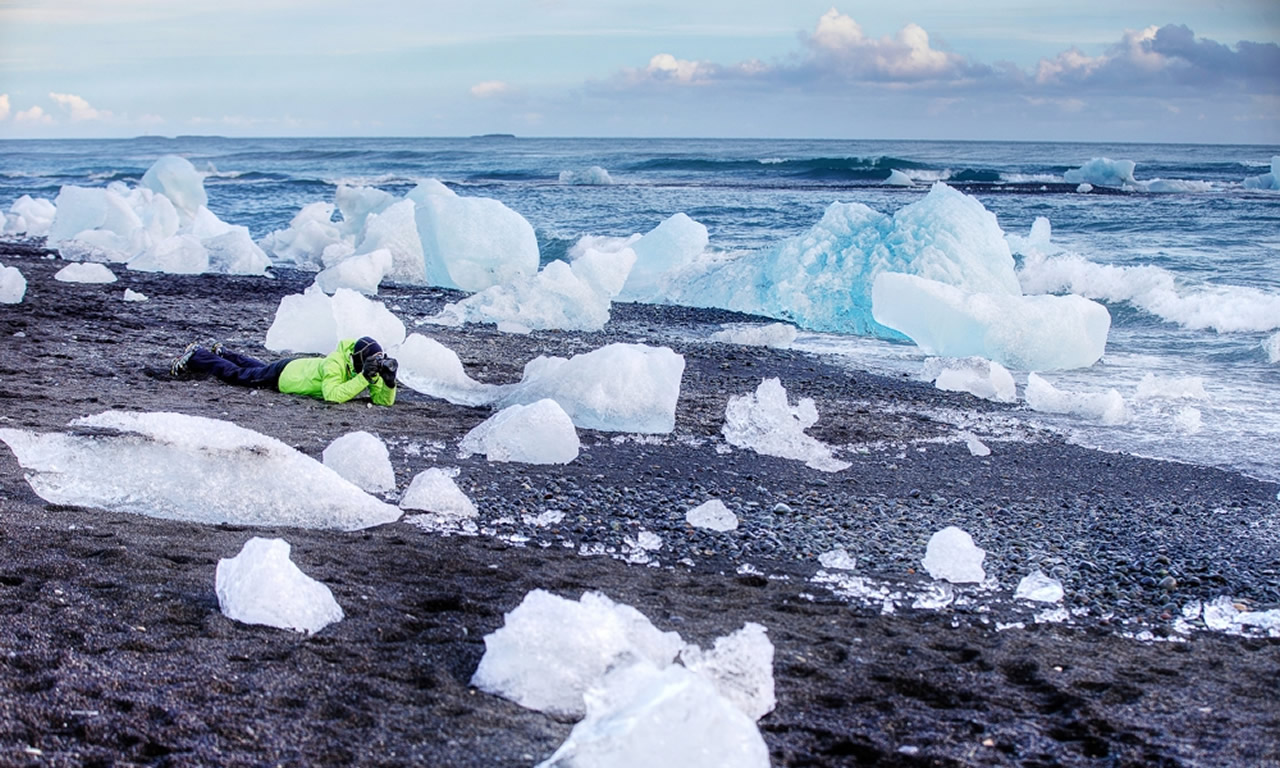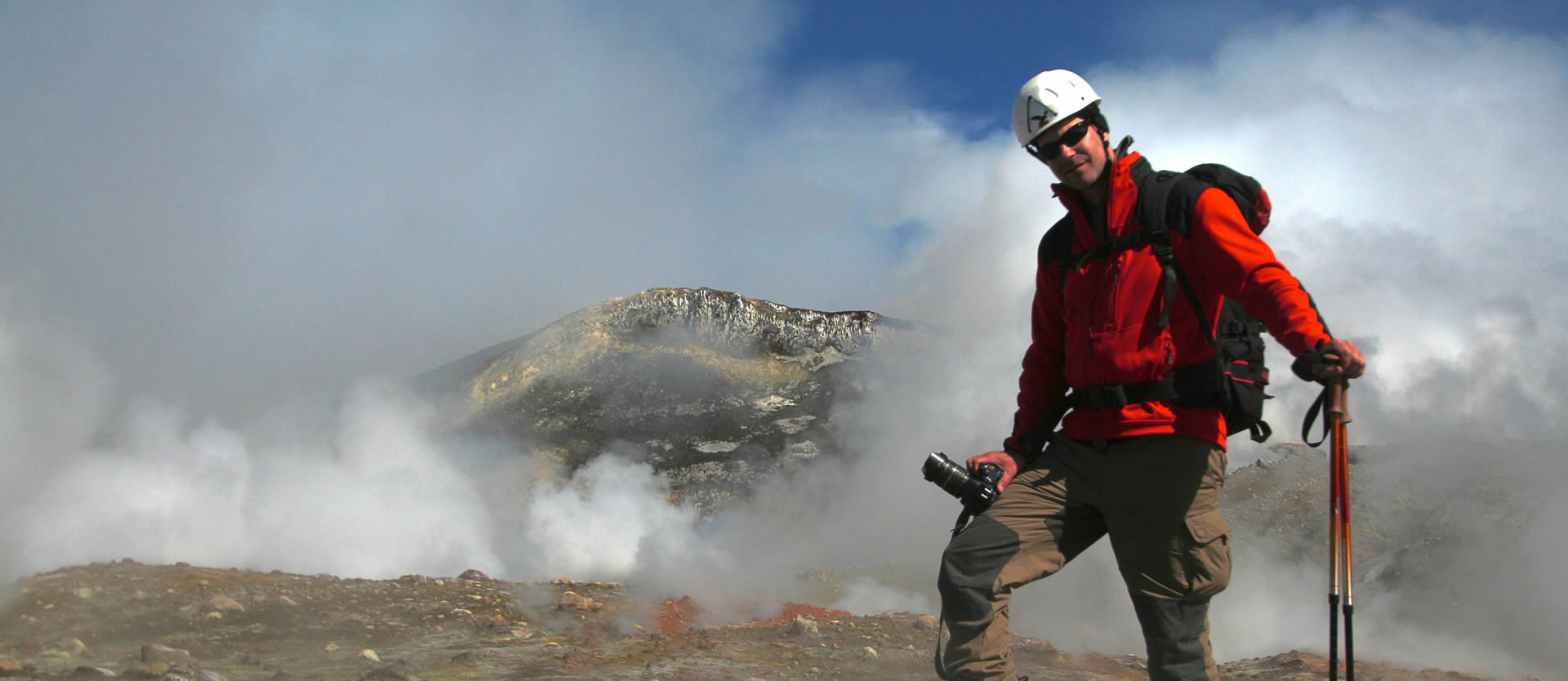Fiery Craters and Northern Lights

Florian, what was it that got you so interested in the volcanically active regions around the world?
During the course of my studies, I was able to travel to the Italian volcano, Stromboli for the first time. It was getting to see the absolutely beautiful island but really the volcanic eruptions and red hot lava that awakened my passion and that have me returning year after year.
You photograph quite a lot during your travels; your website www.vulkankultour.de is full of impressive volcano pictures. Where do you find the fascinating lighting conditions?
When you’re on an active volcano, dawn and dusk are the most breath-taking times. In the growing darkness, it’s possible to see how the opening of the crater glows. Due to the light conditions during the day, it’s impossible to see this illumination. You’re able to get especially beautiful pictures by capturing not only the glowing crater, but also the surrounding morphology. This is really only feasible during the “blue hour”-within approximately 45 minutes after sunset or before sunrise.
Is there an instance where the lightning conditions were particularly memorable for you?
I can remember a sunset on the peak of Stromboli, where the colors were so intense I can only describe them as “liquid gold.” I’ve never experienced anything like that and I still think about it regularly to this day.
Similarly incredible was a sunrise that I experienced a short while ago in Southland, New Zealand, where the sun hovered above the horizon and was perfectly framed inside the curved outline of a stone arch. It’s only possible to experience this from the exact spot where we were twice a year: once in autumn and once in springtime. Without a doubt though, the most memorable for me was seeing the northern lights in Iceland for the first time. They were so intense and bright and they flickered all over the entire sky. It’s not something I’ll ever forget.

What makes the light in Iceland so unique?
The depth of the sun! Especially during the winter, the sun never climbs over the horizon. Adding to this is high humidity, thin cloud cover and high fog, which create a soft, milky light that I can only compare to neon light. These kinds of light conditions can only be found in Iceland. In the photography scene there’s a saying that a photographer shouldn’t even bother between the hours of 12 and 3 due to the harshness of the daylight. That is definitely not the case in Iceland, especially during the winter.

Photographing flowing rivers of lava is quite the test. Do you have any tips on how to get good results?
Darkness and glowing lava is challenge enough for a photographer. Beginners often make the mistake of adding additional lighting to the lava, making it so bright, it’s almost white. The best thing to do is to experiment with different apertures, shutter speeds and ISO values. An open aperture, an ISO value of maximum 800 and a shutter speed of just a few seconds were what really made the difference for me in the end. Only then was it possible to capture the direction of the flowing lava. Of course this is all dependent on the residual light-ideal here is the “blue hour” after the sun sets. The picture is perfect when you’re still able to see the landscape all around and it isn’t just a black background.
What is more, with the development of the digital camera, it’s so much easier to learn from your mistakes, since you can instantaneously see the results. Earlier with analog photography, it really was an art trying to perfect the picture after seeing the results days or even weeks later. Back then, achieving a perfect picture with 36mm film was the ultimate achievement.
Whoever is interested in traveling with Florian Becker to the most diverse volcanic regions of the world can find more information at: www.vulkankultour.de













